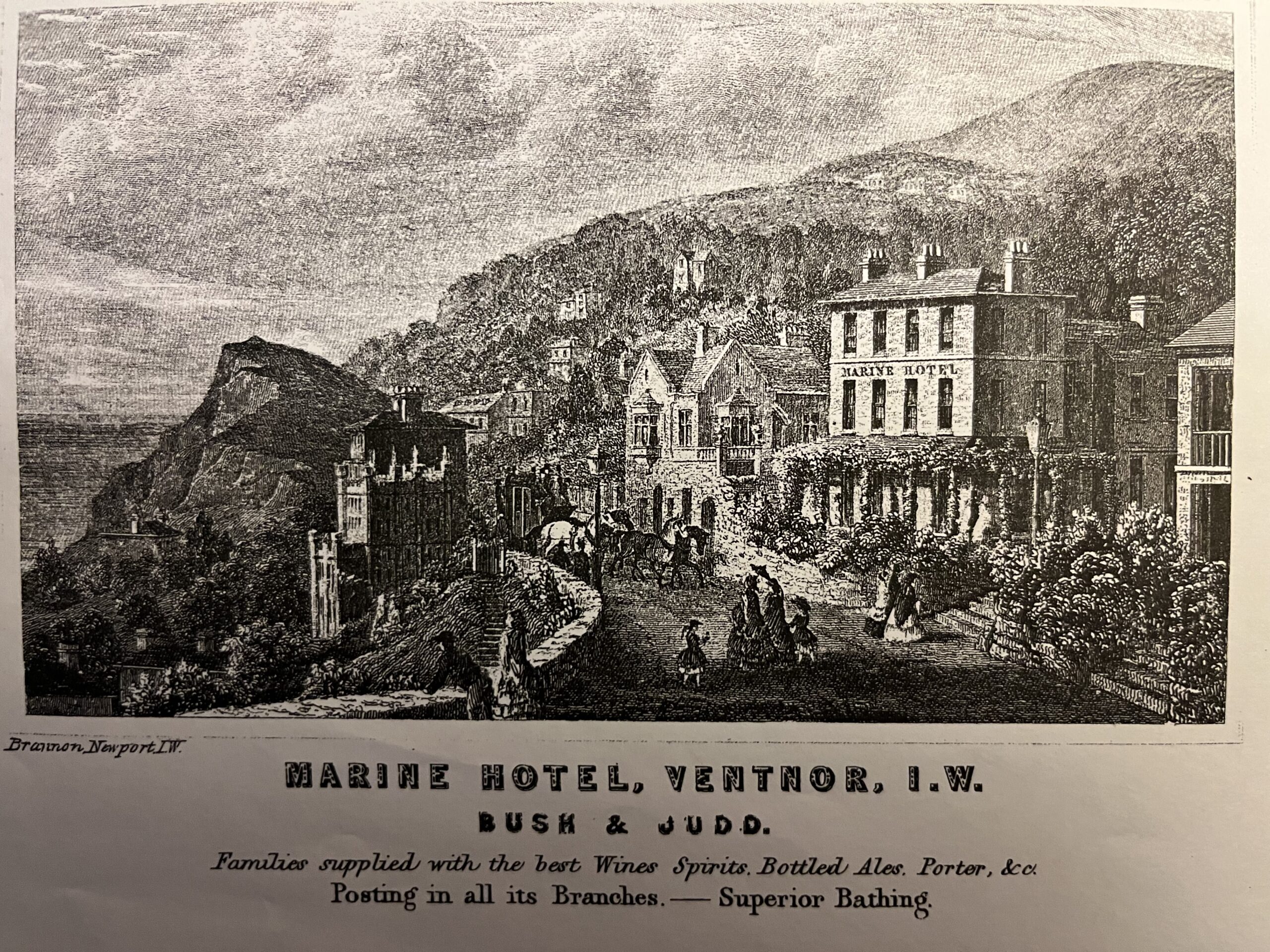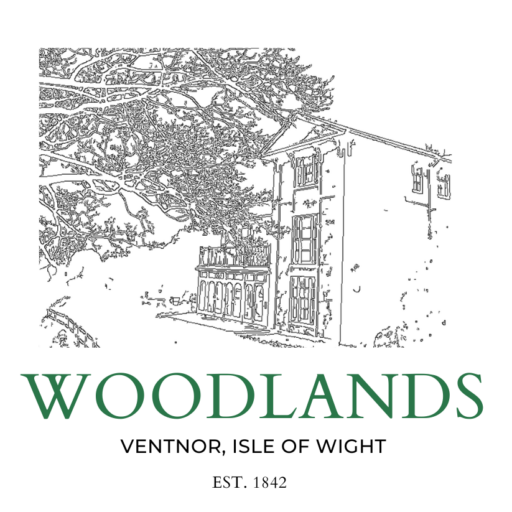HISTORY
THE HOUSE
In 1842, John Hambrough, the owner of Steephill Castle, constructed a grand residence known as “Albion Grove” at the easternmost point of his estate. This house, set against the backdrop of the picturesque Ventnor coastline, was built with the ambition of reflecting the growing sophistication and architectural style of the period. Hambrough’s vision for the property included not only its impressive structure but also its integration into the surrounding landscape, which was beginning to gain popularity as a resort destination.


From 1845 to 1865, the house served as the rectory for the curate of St Catherine’s, Ventnor, Reverend William Sharp. During this time, the residence was often filled with the sounds of ecclesiastical duties, providing a place of rest and reflection for the clergy. However, between 1851 and 1861, the name of the house was changed to “Woodlands,” a title that perhaps better reflected the dense, green surroundings and the tranquillity that the house offered.
The construction of Woodlands was no small feat. The building was designed in a style that blended elements of the traditional British country house with the grandeur of Victorian Gothic. The exterior featured an intricate combination of stone and brickwork, with large, arched windows and a steeply pitched roof that echoed the architectural trends of the period. The interiors were equally impressive, with high ceilings, detailed woodwork, and a layout that encouraged natural light to flood the rooms.


Woodlands’ unique position on the estate allowed it to offer breathtaking views over the Ventnor coast and the rolling hills of the Undercliff. The surrounding grounds were meticulously landscaped, adding to the house’s charm and making it a rare example of a private residence that harmonized so beautifully with its natural surroundings. Over the years, the house has become an important piece of Ventnor’s architectural history, symbolizing the town’s transition into the bustling resort it would become in the latter half of the 19th century.
VENTNOR

Ventnor, though once a quiet hamlet, transformed rapidly into a vibrant Victorian holiday destination by the mid-19th century. The town’s history is as rich and varied as its architectural landscape, which blends picturesque Mediterranean-style terraces with exuberant Victorian buildings. Nestled on the southern coast of the Isle of Wight, Ventnor lies at the heart of a seven-mile-long Area of Outstanding Natural Beauty known as the ‘Undercliff,’ stretching from Luccombe to Blackgang at the southern tip of the island.
This dramatic coastline is the result of ancient land slips that occurred during the last Ice Age, around 7000 BC, when the island separated from the British mainland. The resulting cliffs and downs rise nearly 800 feet above the town, creating a stunningly varied landscape that includes rugged coastal scenery, sheltered valleys, and wild, natural beauty. These unique geographical features have also contributed to Ventnor’s mild, subtropical climate, making it an ideal destination for health tourists seeking the restorative qualities of the fresh air and sunshine.

The town’s fortunes took a significant turn in the 1830s when Sir James Clark, a prominent physician, extolled the healing qualities of Ventnor’s climate and waters in a published report. His words brought immediate recognition to the town, transforming it almost overnight into a fashionable resort destination. This shift in popularity brought an influx of visitors and new residents, with the population soaring from fewer than 100 in 1810 to nearly 1,000 by 1840. By 1851, the number had tripled, and by the turn of the 20th century, Ventnor’s population had reached almost 6,000.
The town attracted many distinguished residents and visitors, including Queen Victoria, Sir Winston Churchill, Edward Elgar, Mahatma Gandhi, Lord Macauley, Karl Marx, Edmund Peel, Haile Selassie, Alfred Noyes, and Algernon Swinburne. These notable figures, along with countless others, helped cement Ventnor’s reputation as a hub for intellectual, artistic, and political figures.
Ventnor’s architectural landscape flourished during this period, with buildings appearing in a variety of styles, resulting in what Cuthbert Bede (Edward Bradley) described as “a medley of every possible known and unknown order of architecture strewn on the rocky slope of the amphitheatre – breakneck precipices and zig-zag roads – intercept the labyrinth of houses.” This eclectic mixture of architectural styles gives the town its distinctive charm and character, with each building contributing to the sense of history that permeates Ventnor today.
